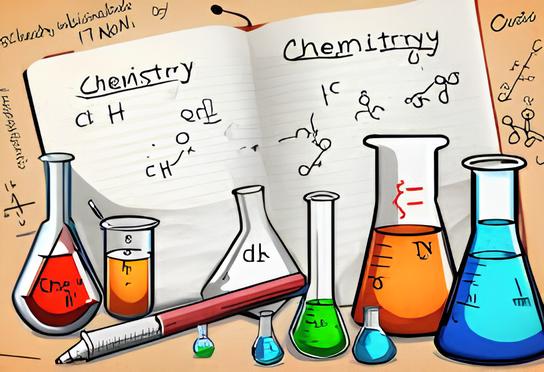JAMB Chemistry Note- Introduction to Organic Compounds
Definition of Organic Compounds
Organic compounds are chemical substances primarily composed of carbon and hydrogen, often combined with other elements like oxygen, nitrogen, sulfur, and halogens. These compounds are abundant in nature and form the basis of life, making up the structure of plants, animals, and other organisms. They are also the foundation for synthetic materials, fuels, and pharmaceuticals.
Tetravalency of Carbon
Tetravalency refers to the ability of carbon to form four covalent bonds with other atoms, including itself. This property arises from carbon’s electronic configuration: 1s2 2s2 2p2, where it requires four electrons to complete its octet.
This property allows carbon to form stable structures such as:
- Straight chains (e.g., propane: CH3-CH2-CH3)
- Branched chains (e.g., isobutane: CH3-CH(CH3)-CH3)
- Rings (e.g., cyclohexane: C6H12)
Key Point: The ability of carbon to form long chains and rings is called catenation, and this is a unique characteristic of carbon among the elements.
Functional Groups
A functional group is a specific group of atoms within a molecule that determines the chemical properties of that compound. For example:
- Hydroxyl group (-OH): Found in alcohols (e.g., ethanol).
- Carboxyl group (-COOH): Found in acids (e.g., ethanoic acid).
- Carbonyl group (C=O): Found in aldehydes and ketones.
Classification of Organic Compounds by Functional Groups:
- Hydrocarbons: Contain only carbon and hydrogen.
- Alkanes: Saturated hydrocarbons (C-C single bonds).
- Alkenes: Unsaturated hydrocarbons (C=C double bonds).
- Alkynes: Unsaturated hydrocarbons (C≡C triple bonds).
- Aromatic hydrocarbons: Contain benzene-like rings.
- Alcohols (Alkanols): Contain the hydroxyl group (-OH).
- Aldehydes (Alkanals) and Ketones (Alkanones): Contain the carbonyl group (C=O).
- Carboxylic Acids (Alkanoic Acids): Contain the carboxyl group (-COOH).
- Esters (Alkanoates): Derived from carboxylic acids and alcohols.
- Amines: Contain nitrogen atoms (-NH2, -NHR, -NR2).
Empirical and Molecular Formula
Empirical Formula: The simplest ratio of atoms in a compound.
Example: The empirical formula of glucose (C6H12O6) is CH2O.
Molecular Formula: The actual number of atoms of each element in a compound.
Example: The molecular formula of glucose is C6H12O6.
Steps to Determine Empirical Formula:
- Obtain mass percentages of each element in the compound.
- Convert percentages to moles by dividing by the atomic masses.
- Divide by the smallest number of moles to get the simplest ratio.
- Multiply by whole numbers, if necessary, to remove fractions.
- Incorporate the valency of each element to cross-check the compound’s formula.
Example 1:
A compound contains 40% carbon, 6.7% hydrogen, and 53.3% oxygen. Find the empirical formula.
Solution:
Moles of carbon: 40 ÷ 12 = 3.33
Moles of hydrogen: 6.7 ÷ 1 = 6.7
Moles of oxygen: 53.3 ÷ 16 = 3.33
Simplest ratio: C:H:O = 1:2:1
Empirical formula: CH2O
Example 2:
A compound contains 85.7% carbon and 14.3% hydrogen. Find its empirical formula.
Solution:
Moles of carbon: 85.7 ÷ 12 = 7.14
Moles of hydrogen: 14.3 ÷ 1 = 14.3
Simplest ratio: C:H = 1:2
Empirical formula: CH2
Practice Questions:
- A compound contains 26.7% carbon, 2.2% hydrogen, and 71.1% oxygen. Determine its empirical formula.
- A compound contains 70.6% carbon, 5.9% hydrogen, and 23.5% oxygen. Determine its empirical formula.
- A compound contains 30.4% nitrogen and 69.6% oxygen. Considering the valency of nitrogen (3) and oxygen (2), determine the empirical formula.
- A compound contains 50% sulfur and 50% oxygen. Considering the valency of sulfur (2) and oxygen (2), determine the empirical formula.
Importance of Organic Chemistry
- Biological Significance: Organic compounds like carbohydrates, proteins, and lipids are the building blocks of life.
- Industrial Applications: Used in the manufacture of plastics, synthetic fibers, dyes, and pharmaceuticals.
- Energy Sources: Hydrocarbons like methane, propane, and gasoline are essential fuels.
- Agriculture: Fertilizers, pesticides, and herbicides are organic compounds.






Please I need more explanation on the topic organic chemistry